How many messenger apps can you count off the top of your head? Probably more than one. They’re quite varied these days, and users have a range to choose from. At the same time, there’s always something lacking—just a little bit—but users always crave something else. That’s why there’s still space in the messaging app development market.
Creating a WhatsApp-like app presents various obstacles for businesses. First, effective app security measures to protect user data and user privacy are critical, especially considering the sensitive nature of shared information. Additionally, operating in a market dominated by established competitors requires distinctive characteristics and an exceptional user experience to attract and retain customers amid tough competition.
In this article, we’ll discuss mobile chat app development: types, processes, and costs.
We’ll also apply the knowledge we’ve gained while developing a messenger app focused on tight security and work-life balance for users in the Middle East region.
Read on for statistics and experience-based information, or simply scroll down to a section with time & cost estimates where we try to answer the question “How much does it cost to develop an app like WhatsApp?”. Alternatively, if you have a concept in mind or require expert advice, feel free to contact us, and our specialists will schedule a free consultation for you.
Messenger app types
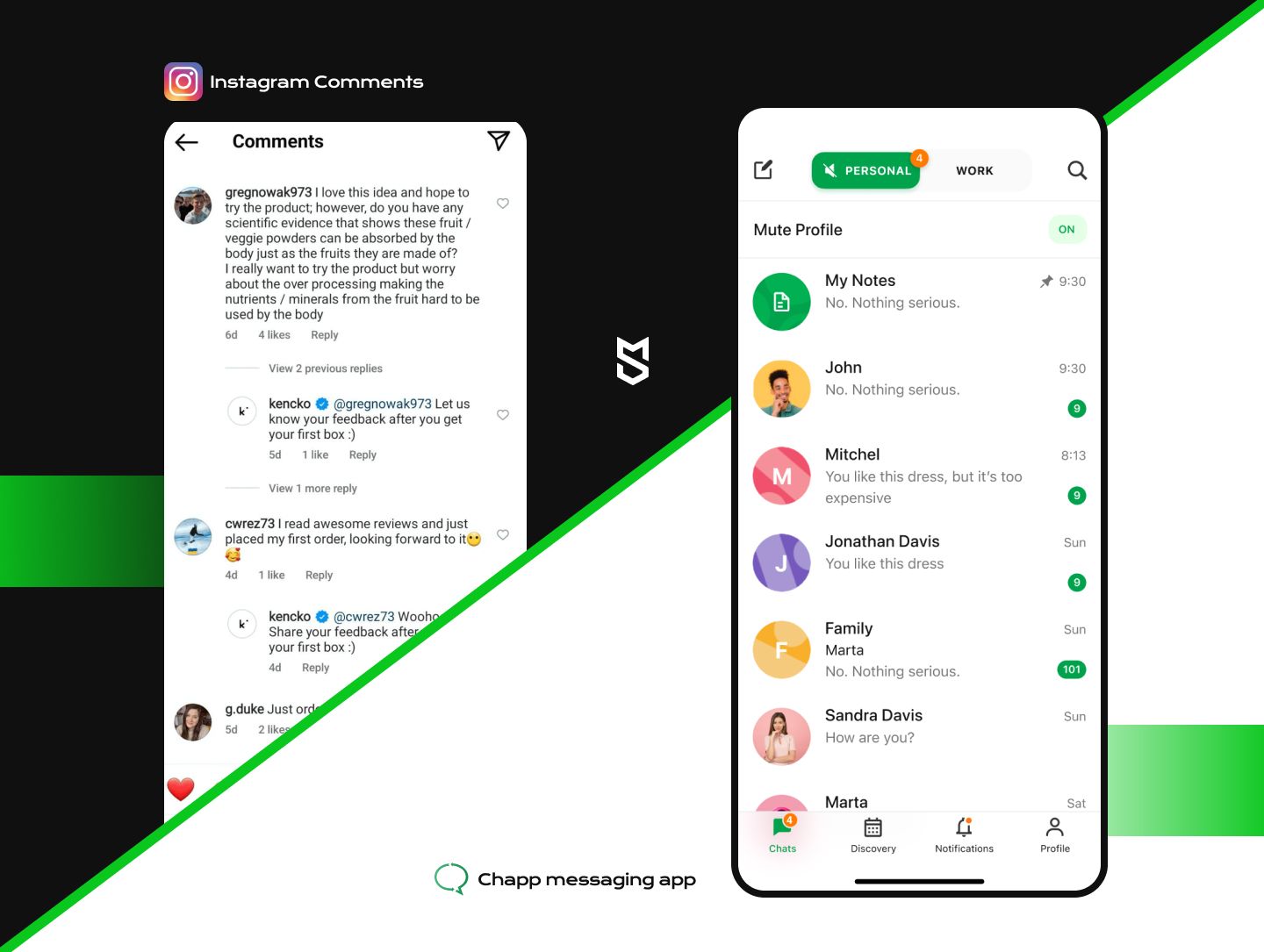
As of February 2024, the top six popular messaging apps globally had over 6.4 billion monthly active users. Granted, most of us have more than one messenger installed, so the mean number of messaging app users is probably somewhere around 3.42 billion. But even so, WhatsApp alone boasts 2 billion MAU. So, if you consider to build an app like WhatsApp, that’s 1/4 out of the nearly 8 billion people currently living on our planet. Imagine the scale.
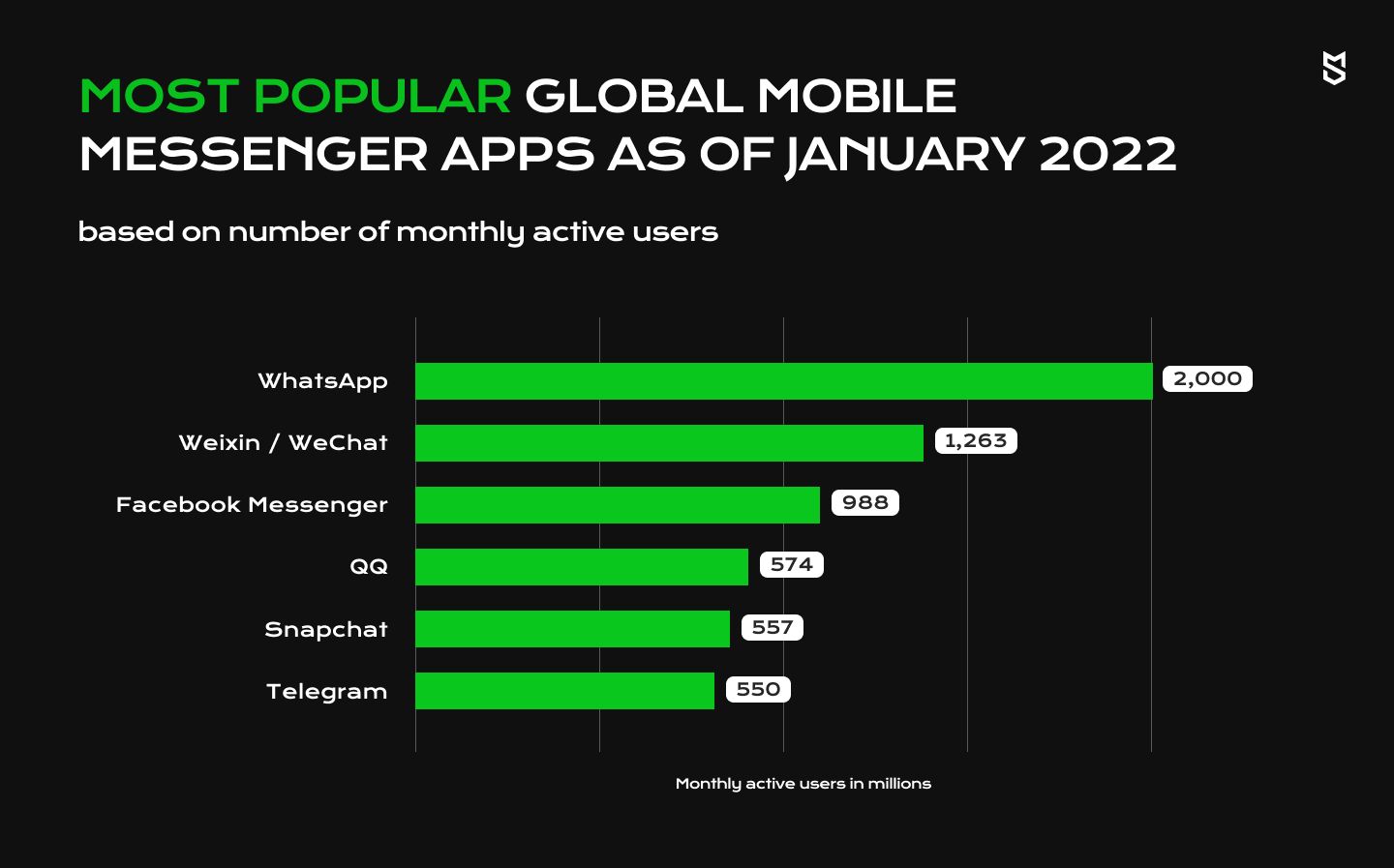
While WhatsApp has been dominating the global messenger app market for years, the number of chat apps challenging it — like Telegram, for example — shows that there’s still space to create a messaging app that will have high chances of becoming popular. Especially if you focus on a specific region. Some examples of messengers popular in certain parts of the world:
- Japan, Taiwan, Thailand, Indonesia — LINE
- China — WeChat, QQ
- South Korea — KakaoTalk
- Eastern Europe and Africa — Viber
- Vietnam — Zalo
- Qatar — imo
These might not be bigger or more popular apps than WhatsApp, but they have earned significant loyalty in their countries and are successful businesses. We see the existence of successful niche competitors to WhatsApp as a clear sign of demand, and that is enough reason to engage more in instant messenger app development.
It’s possible to sort messenger apps by different parameters, but as a tech company, we would mainly differentiate them by how they are developed. There are two main ways to build a messaging app: HTTP + Push Notifications and Extensive Messaging and Presence Protocol (XMPP) with Sockets-placed chat.
The HTTP + Push Notifications model does not provide a constant real-time connection. Basically, what happens is this:
- A client sends a request to a server
- The server brings the accomplished request back
For instance, Instagram’s comments work this way: One user leaves a like or a comment, and then the recipient gets a push notification. Only once the app is reopened does it reconnect to a server.
The XMPP + Sockets-based chat model involves constantly holding the server-client connection in the background. If the connection is lost, users are switched to offline mode. WhatsApp and most other instant messaging (real time messaging) apps employ this model, and therefore, it will most likely be the model if you’re planning to develop a chat app like WhatsApp.
At the same time, even instant messaging apps still need push notifications, so you’ll likely combine the two models when you develop a chat app.

Features for your app like WhatsApp
In this section, we list the features we’d recommend considering if you want to create a messaging app like WhatsApp. We consider this list to hold the most important features, without which few if any, instant messaging apps will survive in the competitive market. However, we also advise our clients and readers to conduct thorough research on which features their target audience needs and which might be postponed until after the MVP.
- Authentication: This feature differs depending on how users are authenticated: by phone number, social media accounts, or email. This also impacts the accessibility and privacy of their accounts.
- Instant messaging: The capacity to send and receive messages in real time is a key feature of any messaging program, allowing users to communicate quickly.
- Media sharing: Users should be able to exchange various media, such as images, videos, audio recordings, and documents, to improve their communication experiences.
- Group chats: The feature allows users to connect with multiple people, making them great for event coordination, project management, or simply staying in touch with friends and family.
- Custom emoji and sticker support: Including emojis and stickers in messages adds a dimension of expression and fun to conversations, allowing users to communicate emotions and sentiments more effectively.
- Seen receipts: Read receipts notify users when their messages have been seen by the recipient, offering insight into the status of their communication.
- End-to-end encryption: Privacy and security are critical in messaging apps. End-to-end encryption ensures that only the sender and receiver can see the messages, keeping critical information safe from unauthorized access.
- Voice and video calling: Integrating these features enables users to make audio and video calls straight from the messaging app, providing a more personalized and interactive communication experience.
- Customization options: Users like the flexibility to personalize their messaging experience by establishing custom notification sounds, themes, and chat backdrops.
- Integration with other services: Integrating the app with different platforms and services, including social media accounts, calendars, and productivity tools, increases its utility and convenience by allowing users to conduct various tasks without leaving the messaging app.
Most of these are considered essential features and require time to implement and sometimes extra tech, which will inevitably increase your chat app development cost. However, if you include most of them they might as well become your app’s way to get ahead of the competition.
Technology stack for your messaging app development like WhatsApp
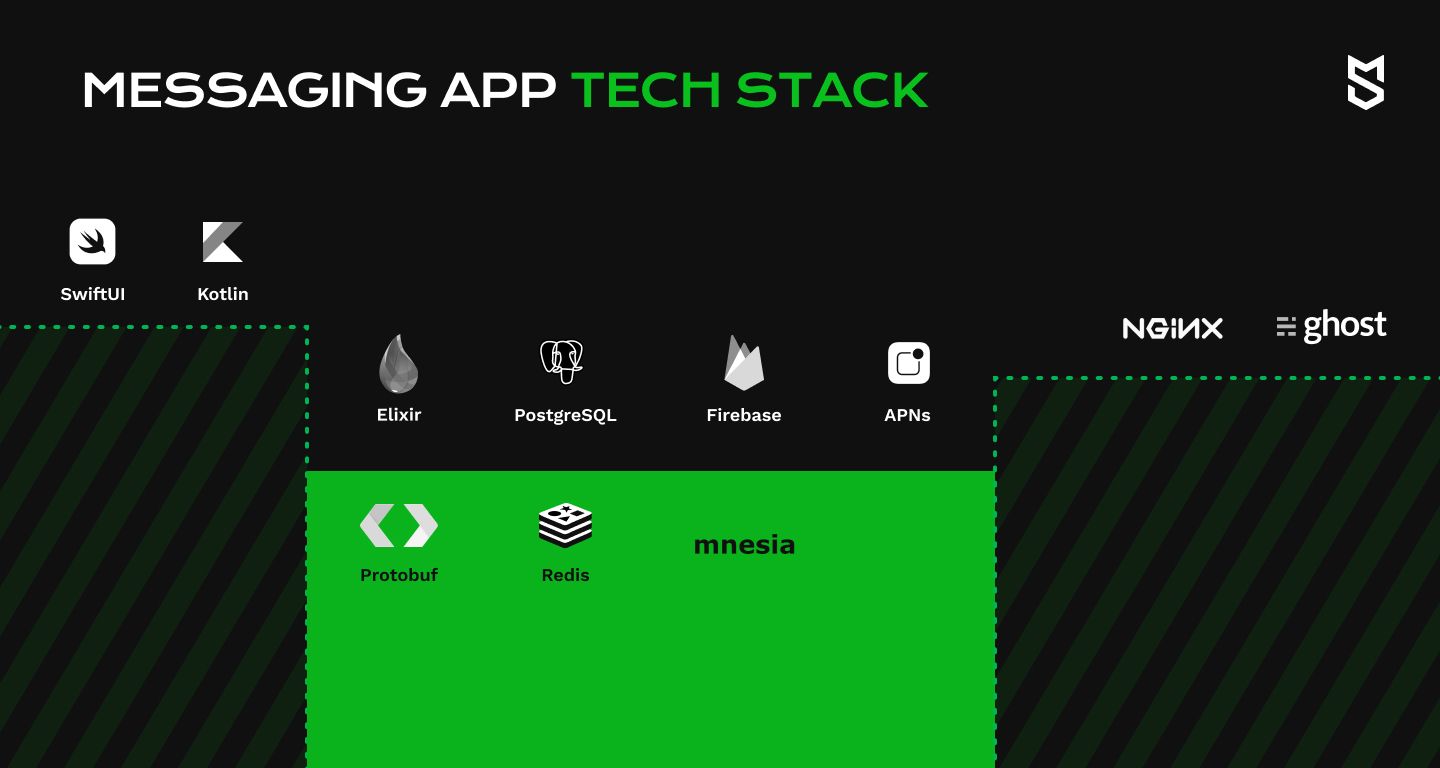
You must choose technologies carefully to develop a messaging app like WhatsApp. A mobile chat messenger is a unique app with complex development. Users expect their communication to be secure from hackers, advertising agencies, and governments. The Cambridge Analytica scandal happened years ago, but its effects are still felt worldwide.
So, mobile chat app development will prioritize data security. Encryption and the latest security certificates are essential. Calls, file sharing, and text messages must be encrypted.
Your app needs a strong backend to handle message exchange, file sharing, and high-quality audio/video calls between multiple users. For this reason, while developing a messenger app for our Middle East client, we’ve switched from Ruby on Rails to Elixir for server part development. Ruby on Rails isn’t fit for the high loads successful messenger apps have.
There are more challenges on the path of real-time chat app creation, as our experience shows. However, none are damning, and all are solvable. You can already check out some tech stack we used in a secure messenger in the table below. The list of solutions isn’t exhaustive, of course, and we’re also adaptable to new technologies.
| iOS core | Swift |
| Android core | Kotlin |
| Backend | Elixir |
| Databases | PostgreSQL, Firebase |
| Pub/sub adapter | Redis |
| Temporary storage | Mnesia |
| Load balancer | Nginx |
| Data serialization | Protobuf |
| Push notifications | APNs |
| Frontend | ghost |
Steps to develop a WhatsApp-Like messaging app
Building a WhatsApp-like messaging app from the ground up calls for systematic planning and meticulous execution. Every stage, from concept to implementation, is critical to achieving a seamless user experience. Here, we'll go over the basics of making your messaging app similar to WhatsApp.
In this comprehensive tutorial, we'll walk you through each step of the development process, from planning the features and scope to creating the user interface, incorporating strong security measures, and optimizing performance.
Discovery phase
The discovery stage of the development process is an important first step in producing a new product or service. It involves extensive research, analysis, and planning to acquire information and determine the project's scope, objectives, and needs. During this phase, the development team works with stakeholders to identify their objectives, target audience, and challenges.
During the discovery phase, market research, competitive analysis, user interviews, and feasibility studies are key tasks. By performing extensive research and data collection, the team better understands user demands, preferences, and pain spots, which informs decision-making throughout the development cycle.
The discovery phase also assists in identifying potential risks, restrictions, and possibilities, allowing the team to create a strategic roadmap and prioritize features and functionalities. Finally, a well-executed discovery phase establishes the groundwork for successful development by assuring alignment with business objectives, minimizing uncertainty, and establishing clear project expectations.
Discovery phase time: 100-200h
Project management
Unless you want to personally manage all project intricacies yourself, you’ll need a person to do that. A project manager is someone who coordinates the development, assigns tasks to team members, and controls these tasks’ completion. They also conduct research together with analytics, manage documentation, curate requirements compliance, and report to the client.
A project manager follows the project from start to finish, from the first contact between the team and the client to launch day, and sometimes after that as well, for future iterations.
Project management time: 730 h
UI/UX design
At this stage, designers create the user experience for your group chat application. This includes both the visuals and the user journey: which button takes you to which screen, the user-friendly interface, entertaining features for users, and more.
Typically, we recommend starting this process with a navigation idea, a set of rudimentary wireframes that outline the user path. After several cycles of increasing complexity, you'll have a final user interface design for your future app.
UI/UX design time: 200 - 320 h
iOS and Android development
This is the chat app development phase, which involves both the basic app development for your chosen platforms and implementing features. We'll calculate the required time using the feature table below.
iOS development time: 1,460 h
Android development time: 1,480 h
Backend development
Even if your messenger does not store user communications on servers (to ensure top-tier data privacy), it will require a server-side for operations. As previously stated, server-side development is not without its challenges.
The backend development requires significant resources and time to ensure quality service so we recommend spending as much time as needed to iron out any potential issues with backend before launching your app.
Backend development time: 800 h
Testing
Finally, testing is another process you can’t go without if you want to have a stable bug-free application. For those inquiring how to build an app like WhatsApp, we always stress the importance of testing since a bug in the system might become a vulnerability in your data safety, and an app crash can cost you valuable users who will leave for a more stable app.
Testing time: 860 h
You can hire the specialists individually or as a team. When you already have an in-house team and require professionals to perform specific tasks, it is usually best to hire specialists individually. For example, you may need someone skilled in a particular technology or a specialist for a specific phase of the development process.
If you intend to assemble a large team to outsource development to, we recommend approaching an outsourcing company since it will be more prudent. This will save you time searching for each specialist. Another advantage of this method is that outsourcing organizations' teams are well-synchronized, have no communication obstacles, and understand one other better overall.
Finally, an outsourcing company will surely agree to and uphold the non-disclosure agreement.
You can find separate specialists in outsourcing companies as well, of course.
For example, Mind Studios provides staff augmentation services alongside offering full-stack development teams.
How long does it take to build an app like WhatsApp?
To make an app like WhatsApp, you’ll need a team of experts who can implement the features you want to see in your app and ensure that everything works smoothly.
There are several options available to help you put together an effective team, for example, staff augmentation and IT outsourcing. Besides developers, which is obvious, you will need other specialists as well.
If you decide to launch your messenger app for both platforms (for example, if your target area has a near 50/50 ratio of Android and iOS users), the Android and iOS development can, of course, take place at the same time.
In the table below, we list the features themselves as well as the approximate time to implement & cost. For this estimate, we develop a chat app for one platform—either iOS or Android.
The time estimate will not differ too greatly between these two platforms.
| Feature | Time, h | Cost, USD |
|---|---|---|
| Sign-up with phone number validation | 36 | 1,620 |
| Profile (phone number, icon upload, bio, username) | 20 | 900 |
| List of contacts | 24 | 1,080 |
| Contact/group info (with shared media) | 64 | 2,880 |
| Personal chats | 180 | 8,100 |
| Group chats | 240 | 10,800 |
| Media/file sharing | 100 | 4,500 |
| Sync with device contacts | 38 | 1,710 |
| Audio calls | 160 | 7,200 |
| Video calls | 160 | 7,200 |
| App settings (notifications, storage and data use, etc.) | 40 | 1,800 |
| Starred/pinned messages and contacts | 32 | 1,440 |
| Connect web/desktop (QR reader) | 16 | 720 |
| Account settings (privacy & security, connected devices, change phone number, delete account) | 32 | 1,440 |
| Chats settings (themes, text settings, accessibility features, etc.) | 80 | 3,600 |
| Chats backup | 88 | 3,960 |
| Notifications | 32 | 1,440 |
| Encryption | 120 | 5,400 |
| TOTAL | 1462 | 65,790 |
You might have noticed that the list above contains some features most messenger apps rolled out at later stages of app launch. We’re talking about features like audio and video calls. Naturally, you can do the same, or it’s possible to leave out the calling functionality completely since the essence of an instant messaging app is in delivering text messages.
However, these days, users have certain expectations when it comes to messengers, and such a decision might be unwise. A deep research into your target audience will help you prioritize features to build WhatsApp-like app MVP better.
Apart from the features everyone already expects a messenger to have, you’ll also need a unique value proposition — a feature or several that will make your app attractive to the users. What features might those be? Here are just a few suggestions and how long they’ll take to build:
- Custom photo editor (basic editing plus frames and filters) — 140h+
- In-built browser (like Telegram’s Instant View) — 32h+
- Scheduled messages and reminders — 48h+
- Self-destructing messages or chats — 32h+
- Location sharing — 100h+
- Group calls — 240h+
- Voice and video messages — 180h+
- People nearby — 160h+
How much does it cost to develop an app like WhatsApp
The cost of making an app like WhatsApp will consist of several parts and will depend heavily on the features you want to implement. We’ve already listed the features in a table in the corresponding section so you can refer to it to choose what features to include and what to leave out in your cost calculation.
In this table, you can see how much time different stages of development can take as well as a messaging app development cost.
| Stage | Time, h | Cost, USD |
|---|---|---|
| Project management | 730 | 32,850 |
| Discovery / research | 100 | 4,500 |
| App design expenses (UI/UX) | 220 | 9,900 |
| iOS development | 1,460 | 65,700 |
| Android development | 1,480 | 66,600 |
| Backend development | 800 | 36,000 |
| Testing | 860 | 38,700 |
| TOTAL | 5,650 | 254,250 |
You might also be interested in discovering how much it generally costs to create an app.
Mind Studios' experience in messaging app development
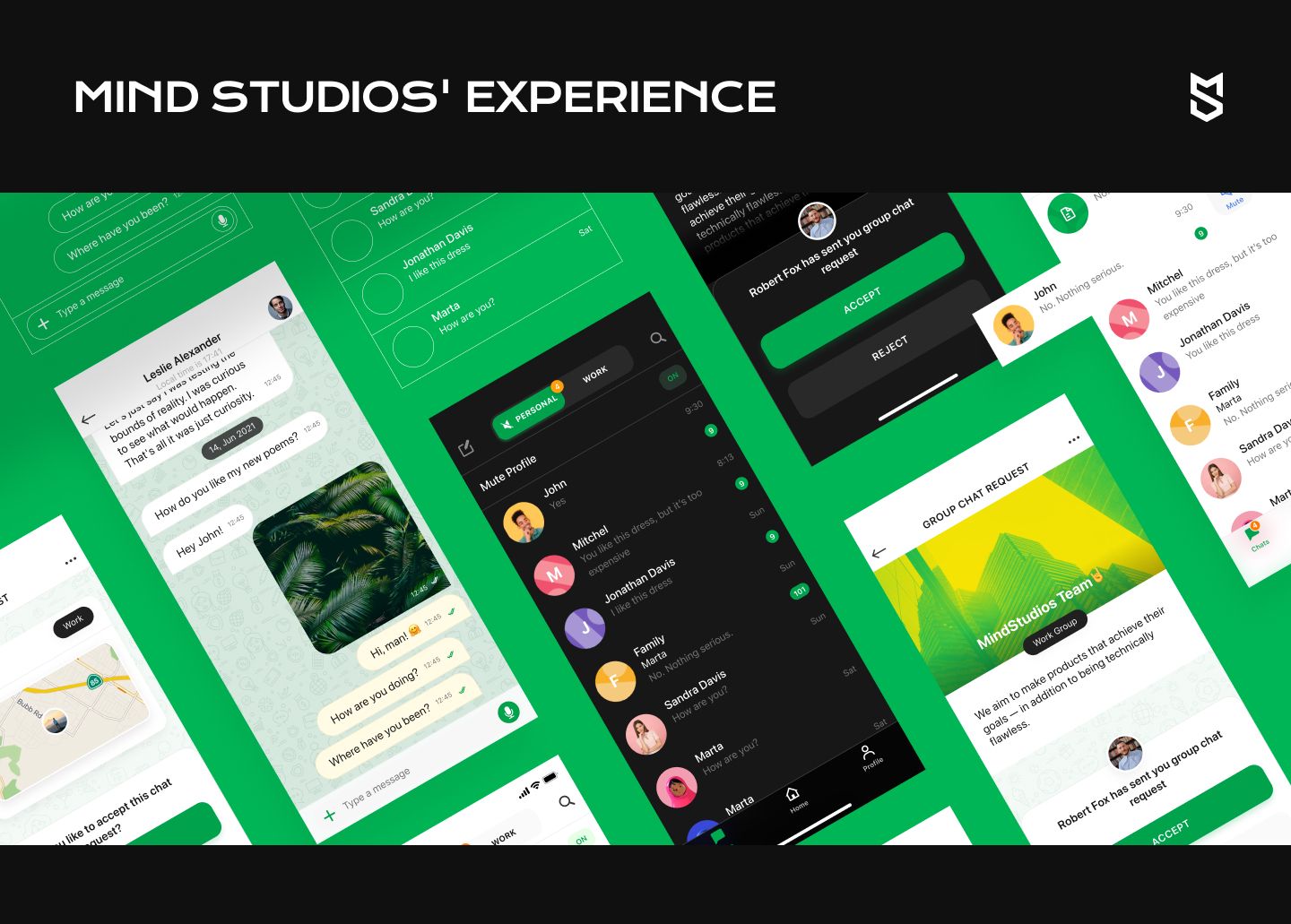
In 2020, we released the MVP version of a secure messenger for the Middle East market. It was — and is! — a project full of interesting challenges. The initial question was how to make an app like WhatsApp but better and more suitable for the region with historically tight restrictions on VoIP and messenger apps.
The two main pain points for the target audience were:
- Privacy
- Work-life balance
It took some time to solve the numerous issues, like managing the load, sharing files without sacrificing encryption, battling bots, building two “groups” with customizable notification settings within the same account to separate work communication from personal, and more. But at the end of a metaphorical day, we’ve released an app that became a successful solution, was downloaded over 17k times, and raised investment for further development.
Now, we continue working on this messenger app development project, enriching it with features. Our client has big ideas, and we are hyped to turn them into reality.
Conclusion
The messaging app market has huge potential. Globally popular messaging solutions don’t even cover 70% of the global market: as of January 2024, WhatsApp dominates 28% of the global market, WeChat – 18%, Facebook Messenger — 13%, and Telegram 10%, according to Statista. That’s close to 69% of the market conquered. This means the other 31% are a playground for different apps, some local, others just niche in their feature sets. The chances of winning over a solid chunk of users are still high.
Moreover, new messaging apps gather a lot of attention as there are opportunities for improvement in existing solutions. This leaves ample space to build a messaging app like WhatsApp that will become a lucrative business by solving some of the users’ pains.
If you’re aspiring to plunge into the business of messengers, we can be of help. Mind Studios has experience building successful chatting apps from scratch, solving all issues that come our way. Get in touch with us and see for yourself: our managers provide a free consultation where they will answer all your questions.

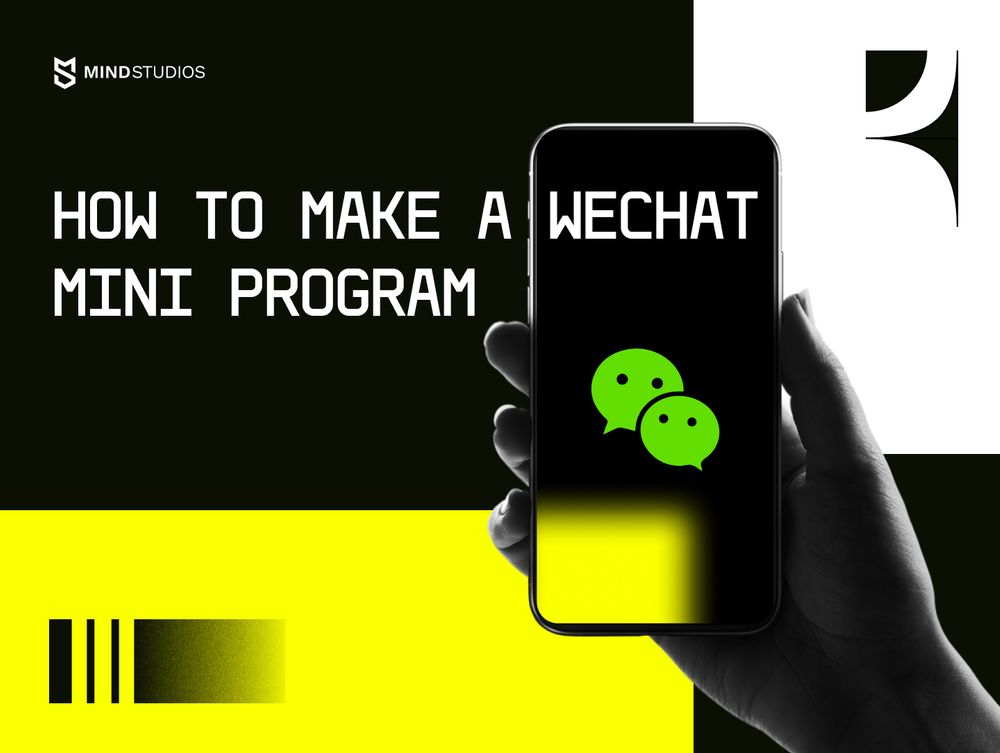
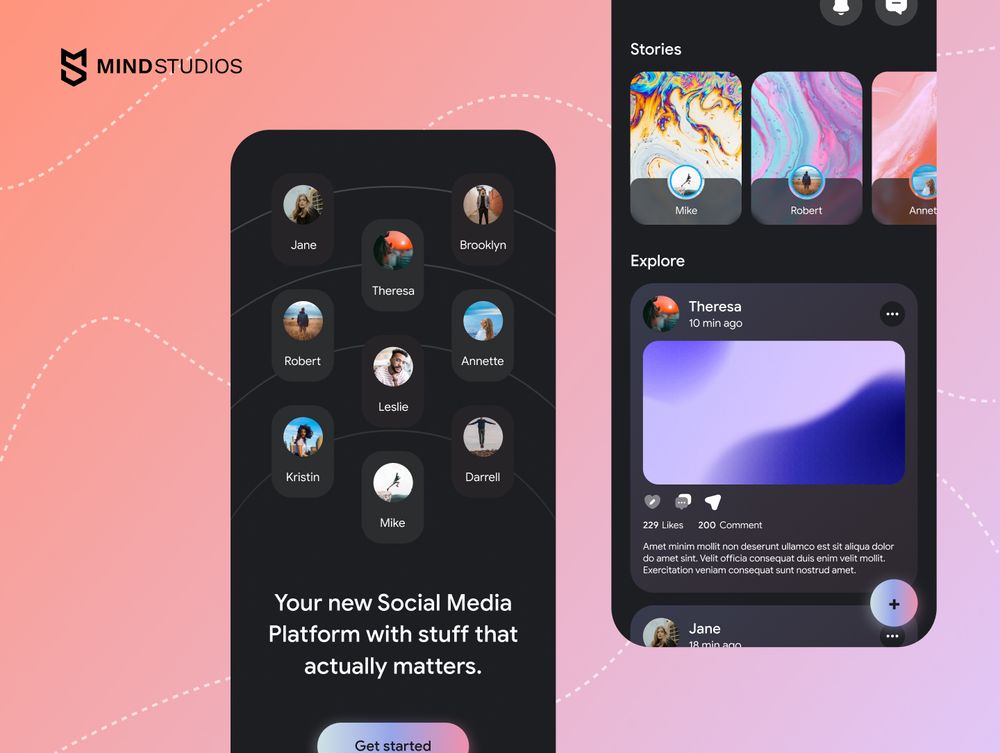
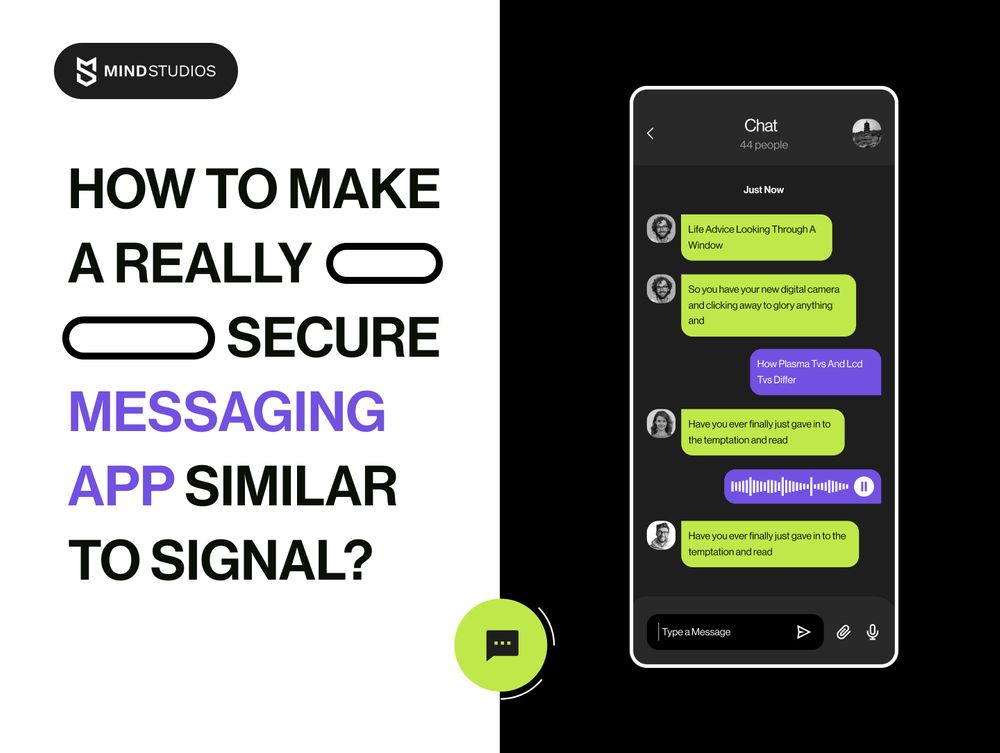

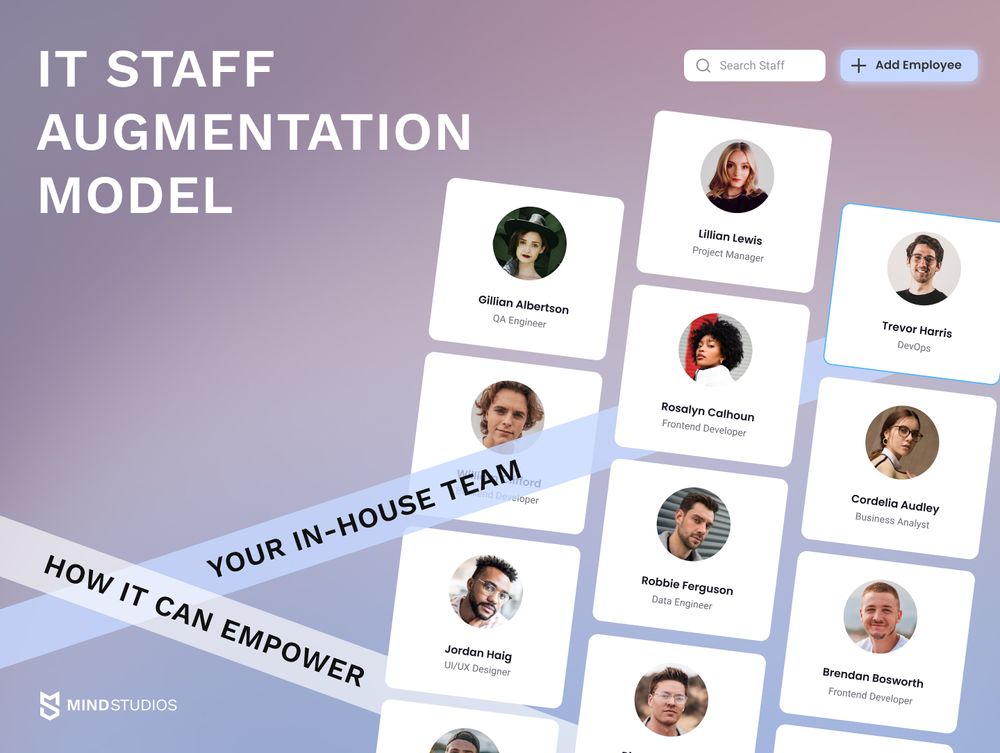
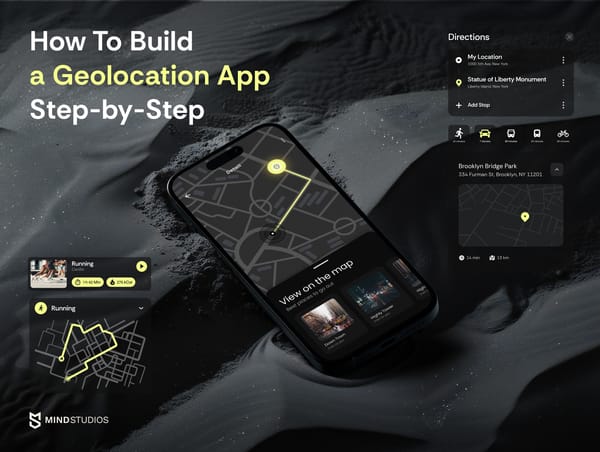
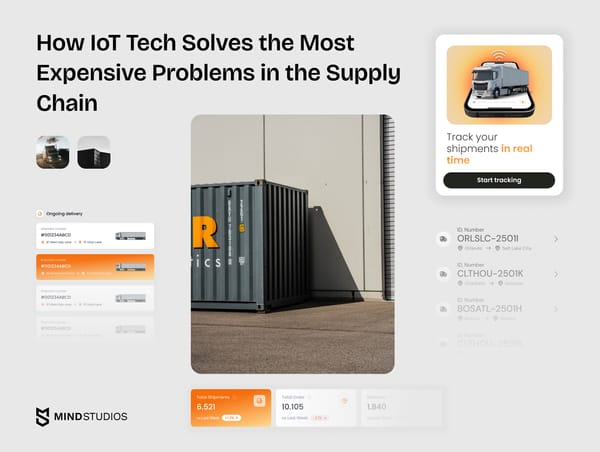
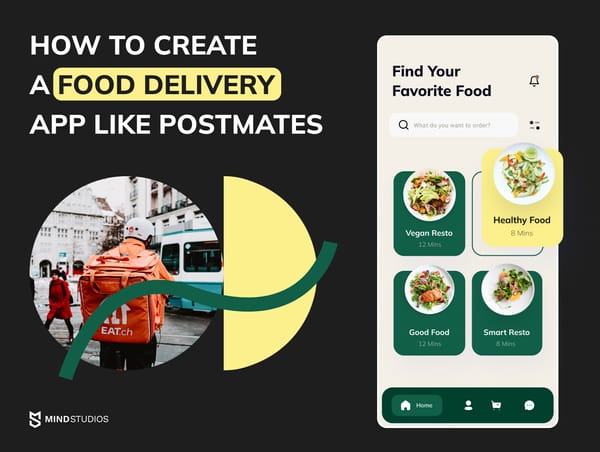
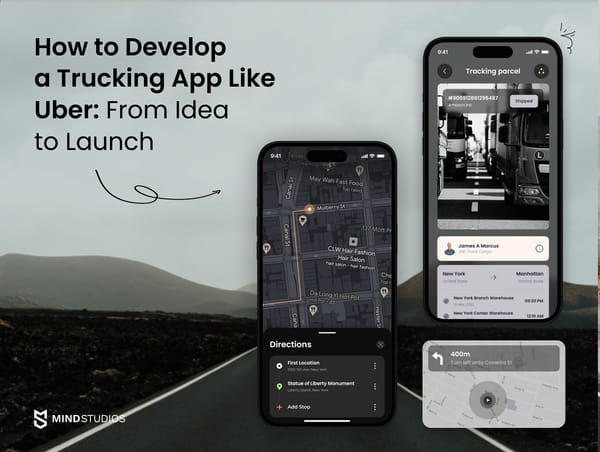
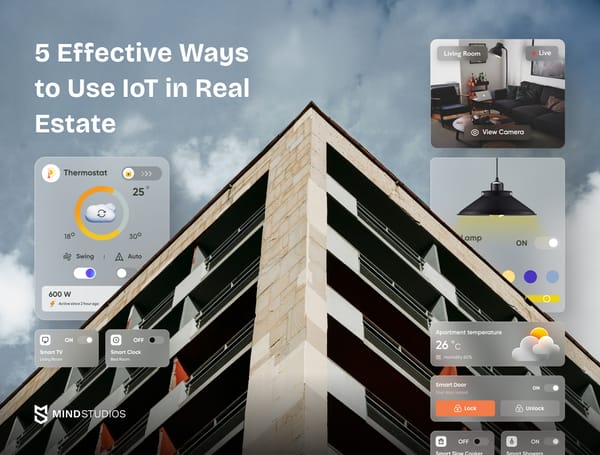
![How to Create an On-Demand Medicine Delivery App [Expert Guide]](https://themindstudios.com/blog/content/images/size/w600/2025/03/IMG-1-Cover-6.jpg)

